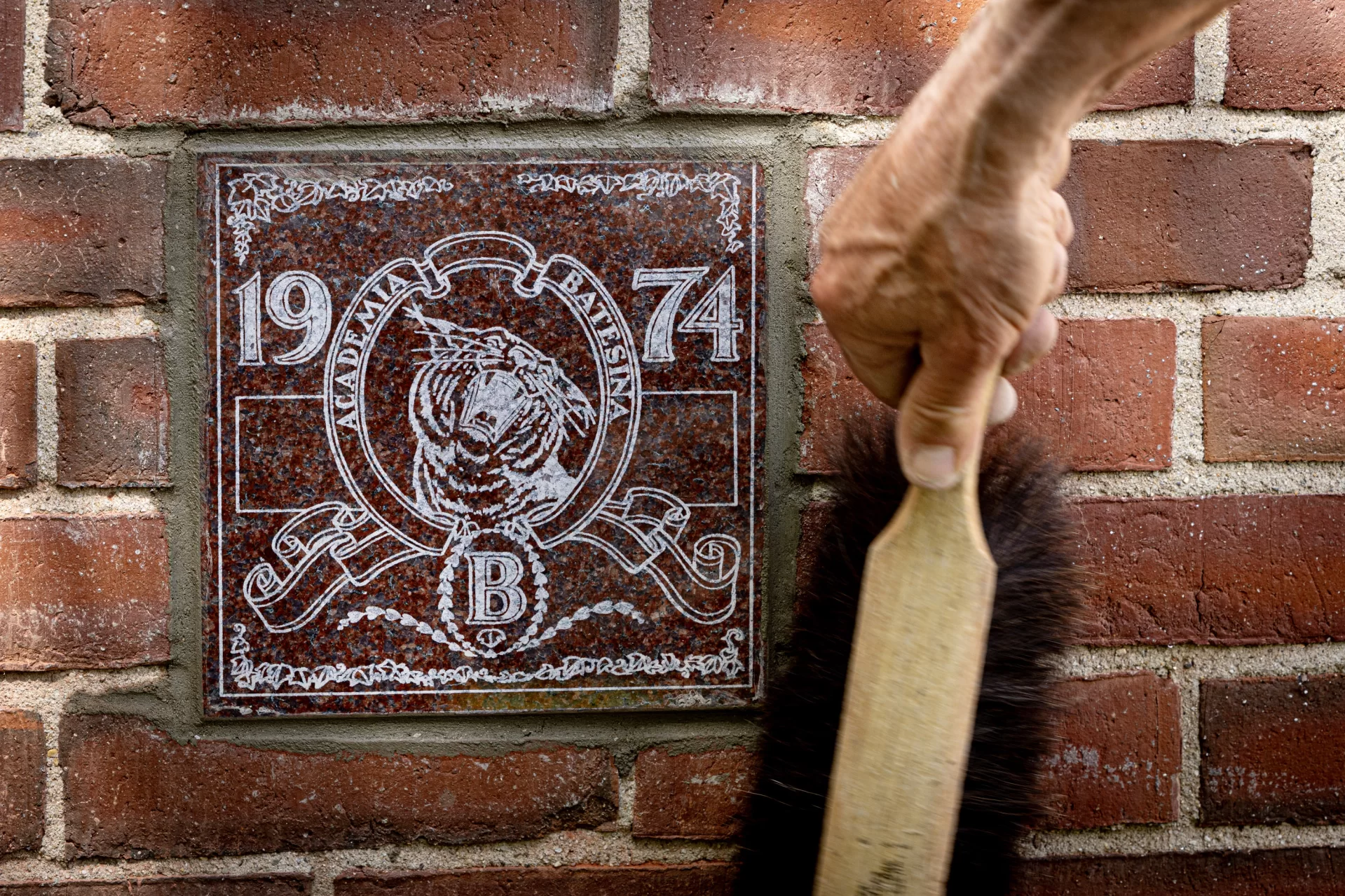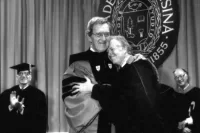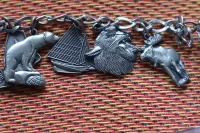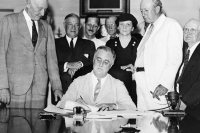
Besides ivy itself, the motif most often seen on Bates ivy stones over the years is Hathorn Hall, depicted in some fashion on six stones since the tradition began with the Class of 1879.
But as the 50th Reunion Class of 1974 set out last year to create their own, long-postponed ivy stone, there was no way, no how that Bates’ first building would find its way into the design.
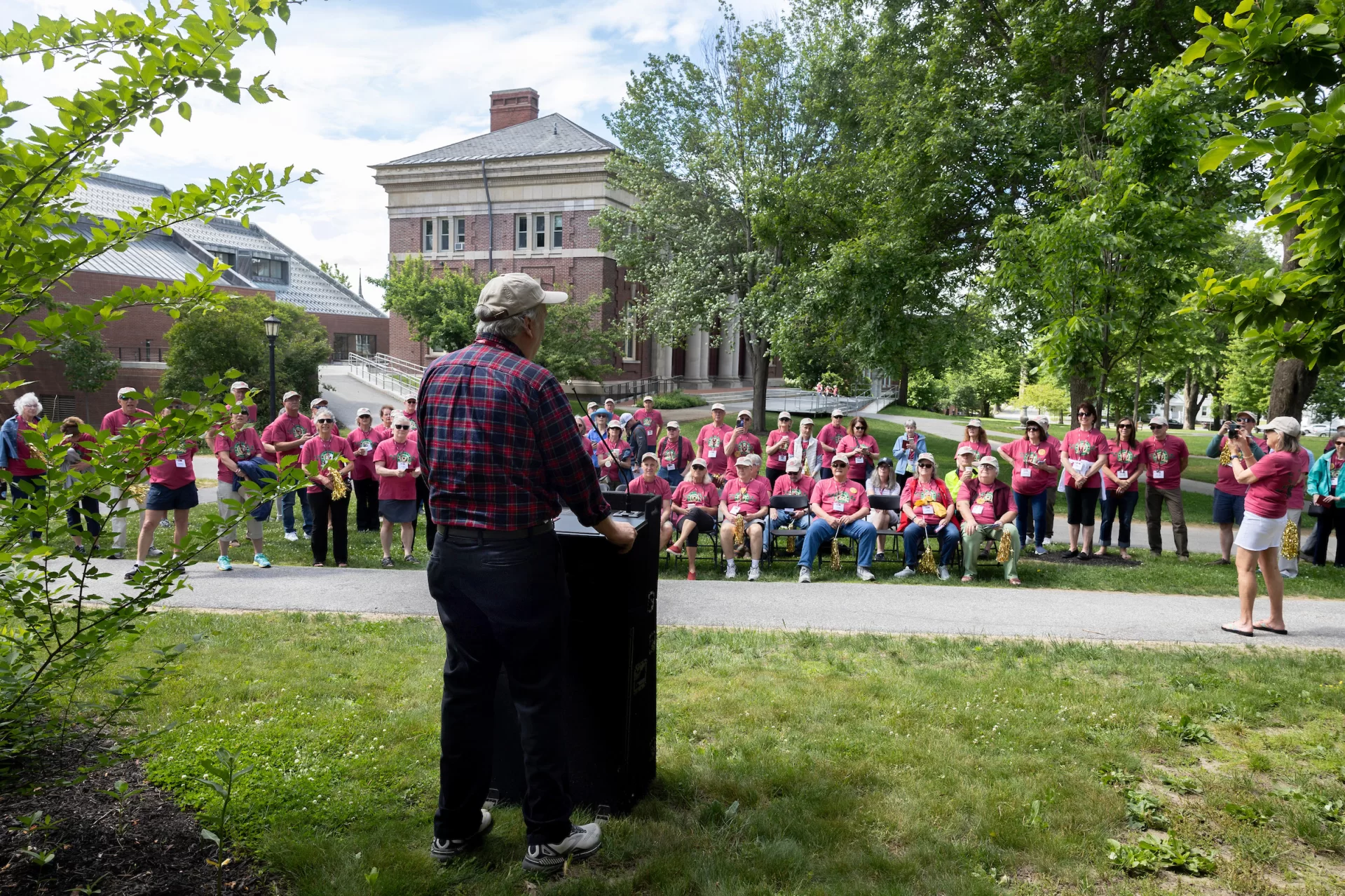
Charles Grosvenor ’74, who designed the stone along with the late Nicki Taylor ’74, shared that insider tidbit as he introduced the class stone during a bittersweet ceremony on Saturday morning of Reunion. He got a knowing laugh from his classmates when he described what project member Karen Harris ’74 had requested: “Please, no Hathorn!”
Harris is a longtime Bates volunteer, trustee emerita, and member of 1974’s Reunion Social and Gift committees, so her “no Hathorn” guidance was less a rejection of tradition than a call for originality. The Class of 1974, which had been launched from Bates into a sea of American malaise in the mid-1970s — Watergate, post-Vietnam War, unfinished work for social, gender, and racial progress — would, 50 years later, strive for something their own.
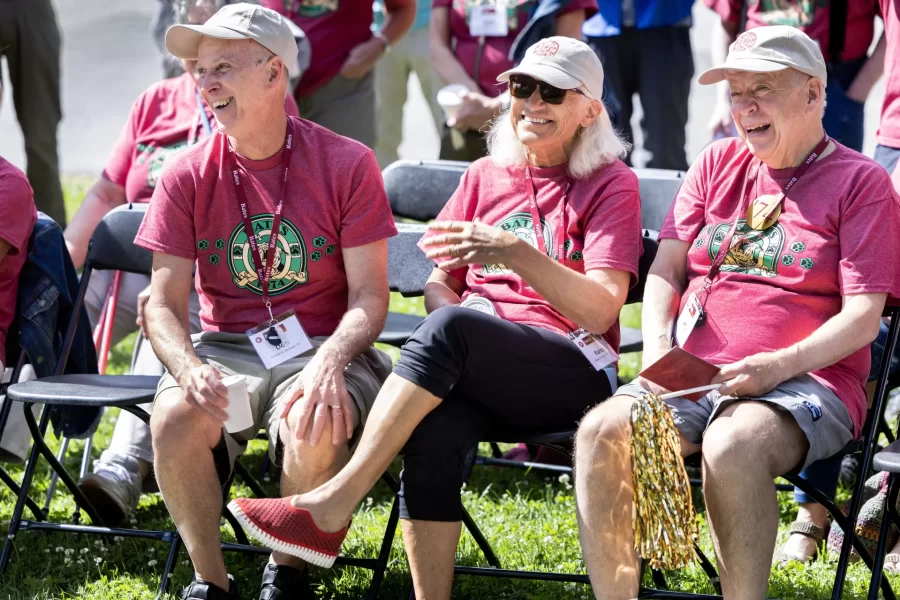
“Rather than finding it restricting,” said Grosvenor, well-known as the director of multiple and beloved The Land Before Time animated movies, “we felt it actually opened up the idea for other concepts and images to put into the stone.”
For many years, the tradition of a class designing and installing a square, granite stone on a campus building was part of a May ceremony that included speeches, odes, songs, and the planting of a sprig of ivy directly below the new stone. But by the late 1960s and into the early 1970s, Ivy Day had become something different, an increasingly raucous tradition centered on a withering roast of the senior class by juniors.
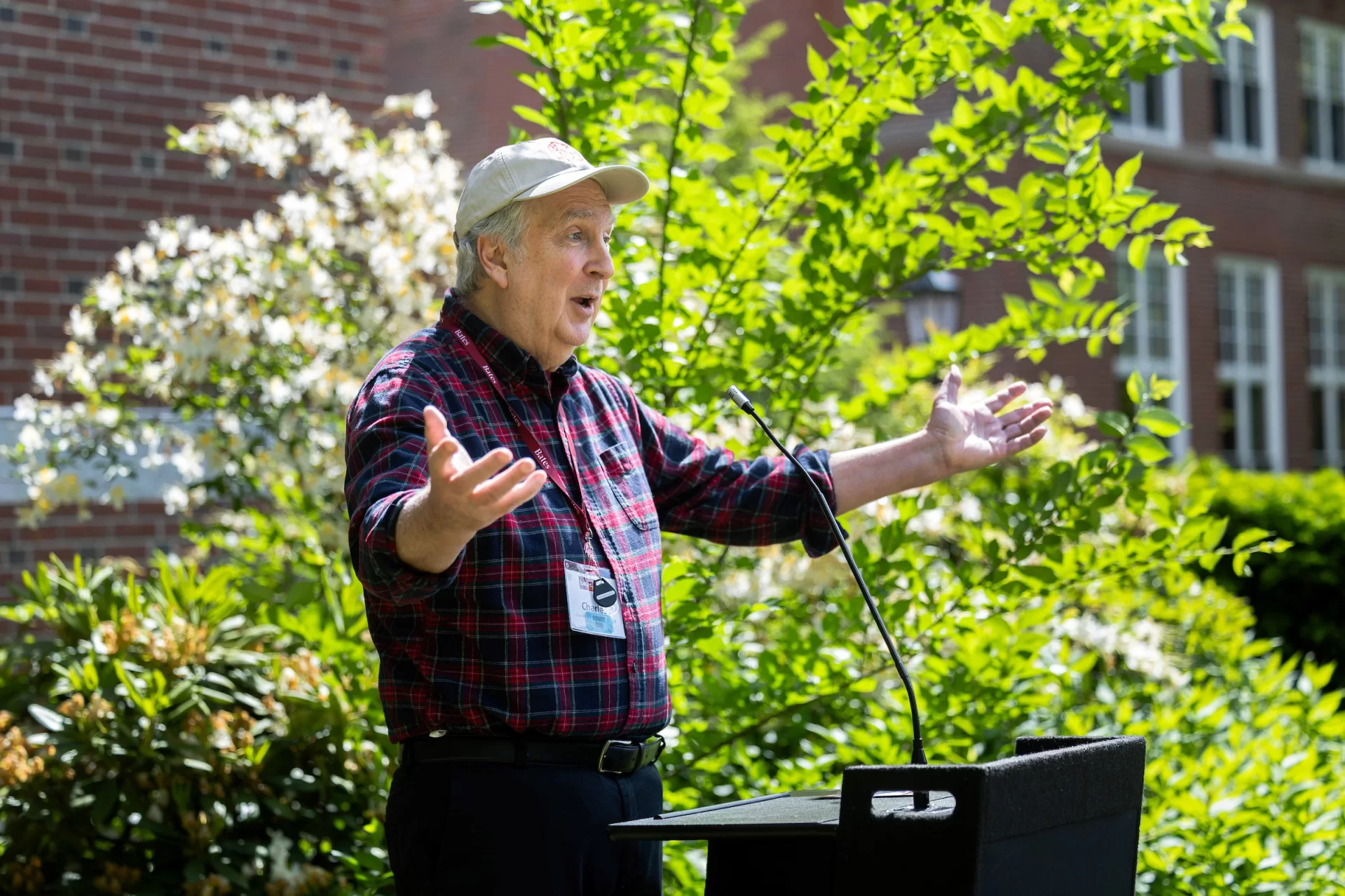
Things got out of hand, apparently, and the event was canceled for a time in the early 1970s. During the fallow time, ivy stones for two years,1974 and 1975, were not installed. (Which is why, when Grosvenor was invited to join the ivy-stone project by classmate Jerry Quinlan ’74, he replied, “Sure, you bet, count me in. But what’s an ivy stone?”) The Class of 1975 created and installed theirs in 2006. And on June 8, 2024, at their 50th Reunion, it was, finally, the Class of 1974’s turn.
After graduating with a studio art major, Grosvenor headed to Hollywood to work in the animation industry. He knew he wanted to avoid being slotted into the painstaking work of frame-by-frame, hand-drawn animation.
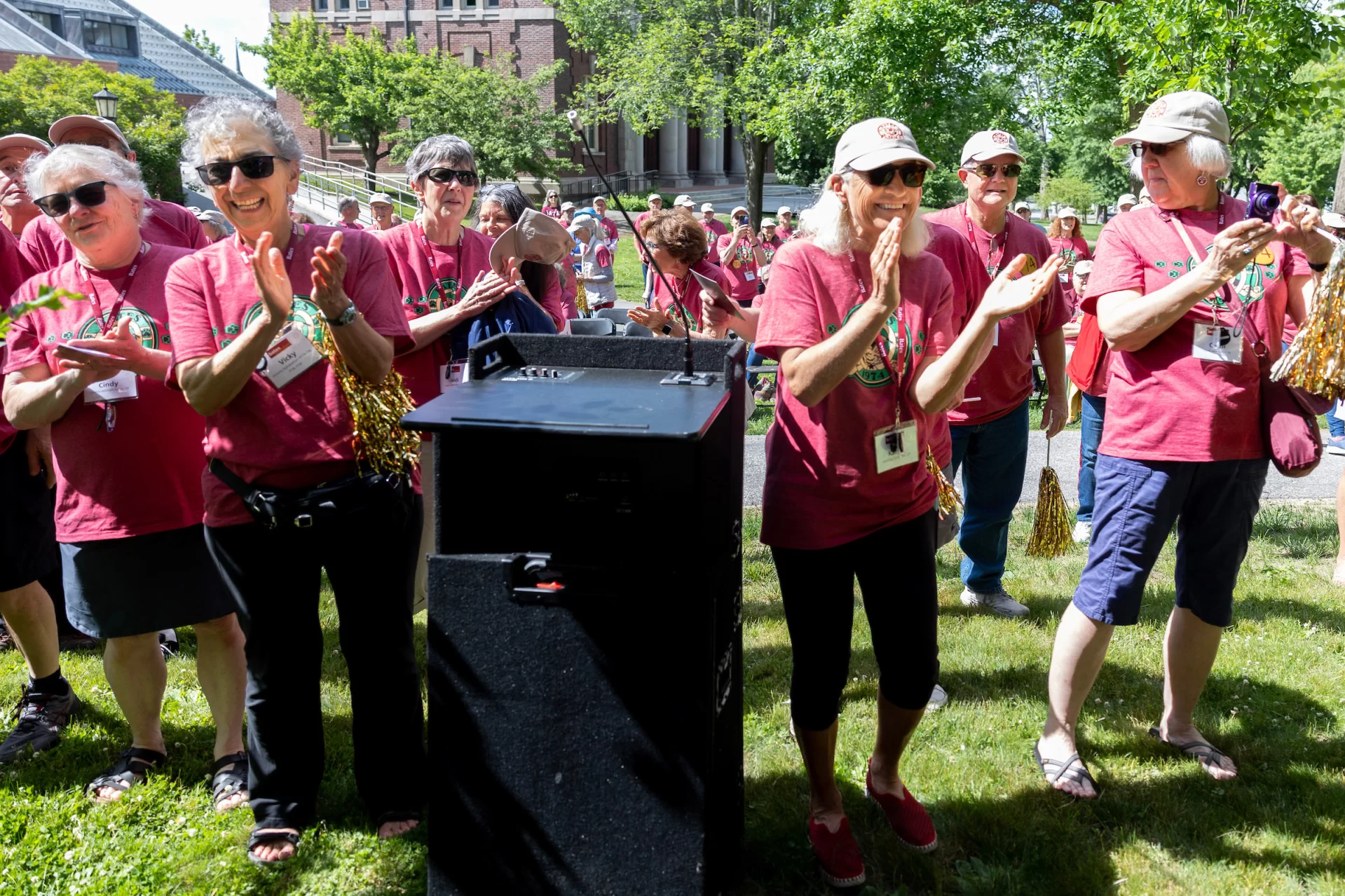
He knew how to use his skill at illustration to create and tell a story. “I was drawn to storyboarding,” he said after the ceremony, describing the work of visualizing a script by creating drawings or panels that map out a film’s scenes and sequences.
Which is exactly what he and Taylor, a fellow Bates art major, did for the Class of 1974 stone, which cleverly draws on an iconic logo to tell a Bates story on a 8-inch square granite canvas. “I thought, we’ve got the Bobcat and we’ve got this name, Academia Batesina, which is classy because, well, it’s Latin. And then what can we do with that? Well, the Bobcat has a very distinguished cousin, Leo the Lion” of MGM fame.
From that, Grosvenor and Taylor created a final sketch that played off the iconic MGM logo, blending a roaring Bobcat in place of Leo the Lion, and the college’s Latinized name in place of Ars Gratia Artis, “Art for Art’s Sake.” The MGM parody was one of 25 ideas the pair created, others involving the state of Maine, the letter B with ivy on it, and various Bobcat images.
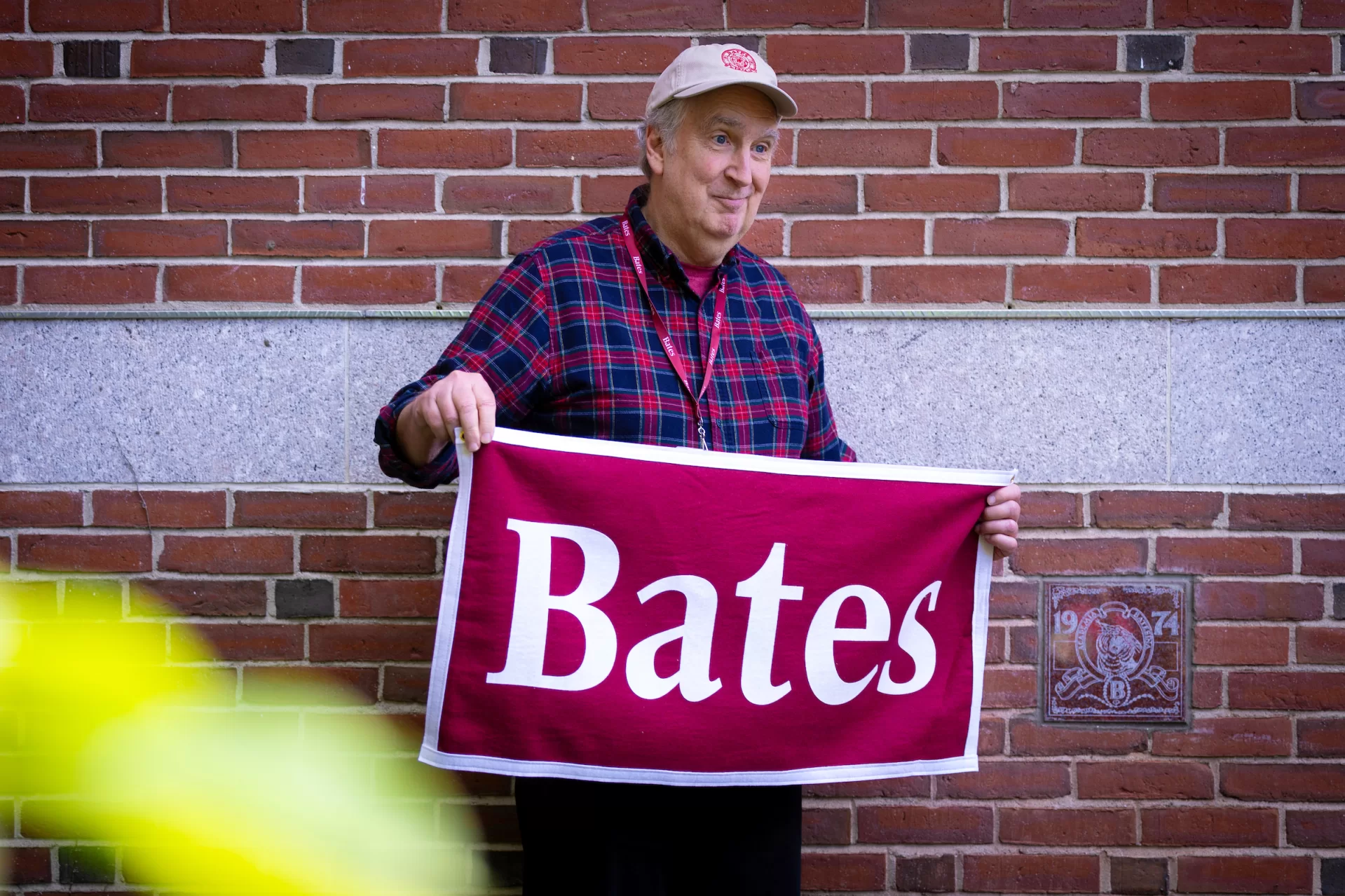
At the dedication, Grosvenor was generous and thoughtful in describing the work of Taylor, who died in November 2023 after a period of declining health. Taylor, who worked in the veterinary field in western Maine, always had an artistic eye, whether using a paintbrush, camera, or quilting needle.

With that artistic eye, and gardening talent as well, Taylor contributed to the design of the ivy tendrils that surround the illustration. She also chose the red granite while she was in intensive care at Maine Medical Center, a few days before she died.
“Nicki knew she would not be able to make it to our 50th Reunion but she loved contributing to the project,” said Harris, her Bates roommate and lifelong friend. Speaking to his classmates at the ceremony, Grosvenor summed it up. “Nicki did great work,” he said.
With that, Grosvenor turned from the lectern set up a few feet from the 1974 stone, hidden until this point by a Bates banner hanging from the Dana Hall brickwork. He walked over and removed the banner, revealing, 50 years after graduation, the 1974 ivy stone.
“Voila! The Class of 1974 is no longer ivy stone short!”
